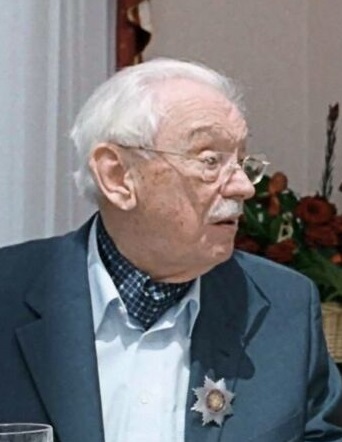Sergey
Vladimirovich Mikhalkov (Russian: Серге́й Влади́мирович Михалко́в; 13 March [O.S. 28
February] 1913 −
27 August 2009) was a Soviet and Russian author of children's books and
satirical fables who had the opportunity to write the lyrics of his country's national
anthem on three different occasions, spanning almost 60 years. Mikhalkov was
born to Vladimir Alexandrovich Mikhalkov and Olga Mikhailovna ( Glebova)
Mikhalkov stemmed from the noble family of Mikhalkovs and had tsarist admirals,
governors, and princes among his grandparents. Since the 1930s, he has rivalled
Korney Chukovsky and Agniya Barto as the most popular poet writing for Russophone
children. His poems about enormously tall "Uncle Styopa" ("Дядя Стёпа") enjoyed particular popularity. Uncle Styopa is a friendly
policeman always ready to rescue cats stuck up trees, and to perform other
helpful deeds. In English, his name translates as Uncle Steeple.

Anatoly Timofeevich Fomenko
ReplyDelete(born 13 March 1945 in Stalino, USSR) is a Soviet and Russian mathematician, professor at Moscow State University, well known as a topologist, and a full member of the Russian Academy of Sciences. He is a supporter of revising historical chronology.
This day is also dedicated to the birth of Irina Ivanovna Alfyorova! She is a Soviet and Russian actress. She was formerly married to Russian film and stage actor Aleksandr Abdulov, he adopted her daughter, Ksenia. For me, she is soft-hearted, kind and responsive woman! I admire her personality and her performing!
ReplyDeleteI can say that Mikhalkov died in his sleep at the age of 96 in a Moscow hospital. His funeral, held at the Cathedral of Christ the Saviour, was attended by family, friends, and government officials. He was buried at Novodevichy Cemetery in Moscow with full military honors.
ReplyDeleteAlexej Georgewitsch von Jawlensky (13 March 1864) was a Russian expressionist painter active in Germany. He was a key member of the New Munich Artist's Association, Der Blaue Reiter group and later the Die Blaue Vier. In 1894 he moved to Munich, where he studied in the private school of Anton Ažbe. In Munich he met Wassily Kandinsky and various other Russian artists, and he contributed to the formation of the Neue Künstlervereinigung München. His work in this period was lush and richly coloured, but later moved towards abstraction and a simplified, formulaic style.
ReplyDelete